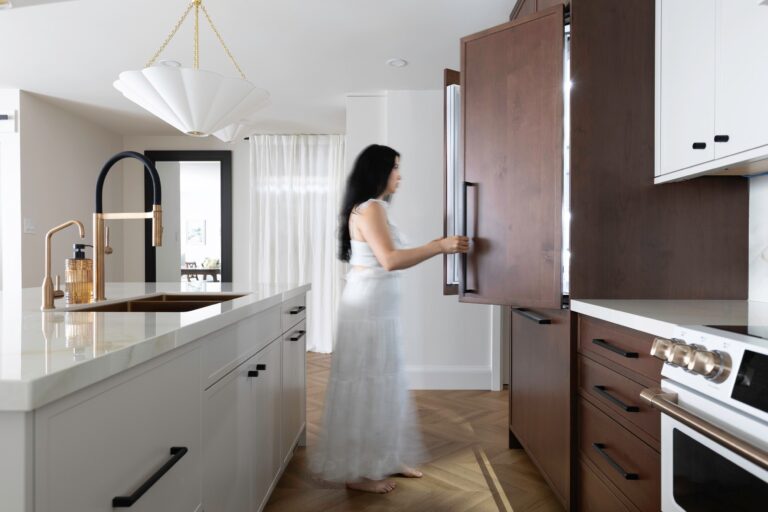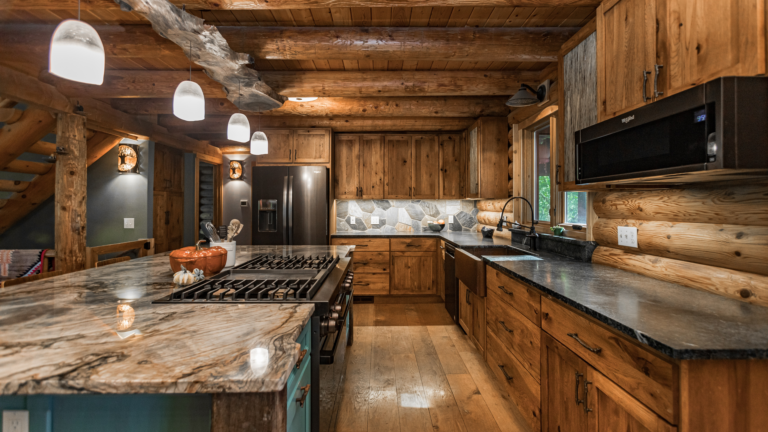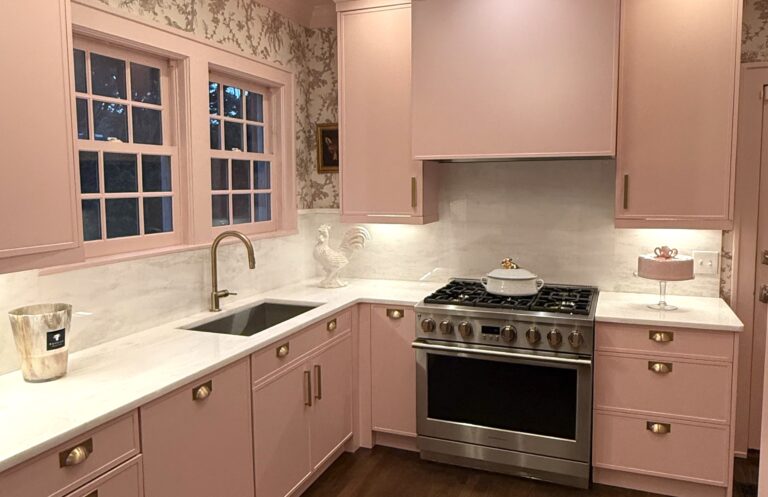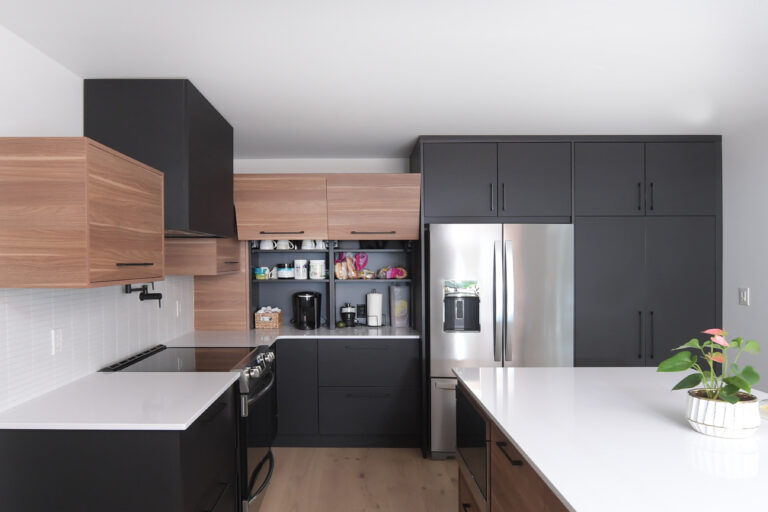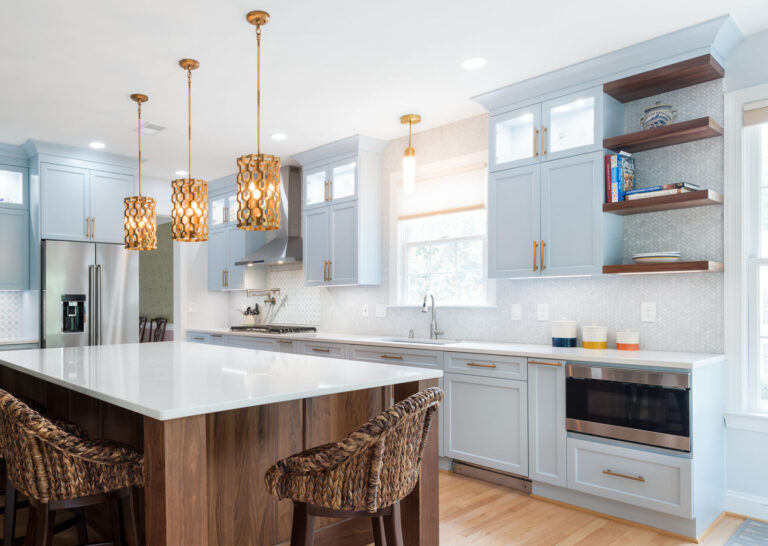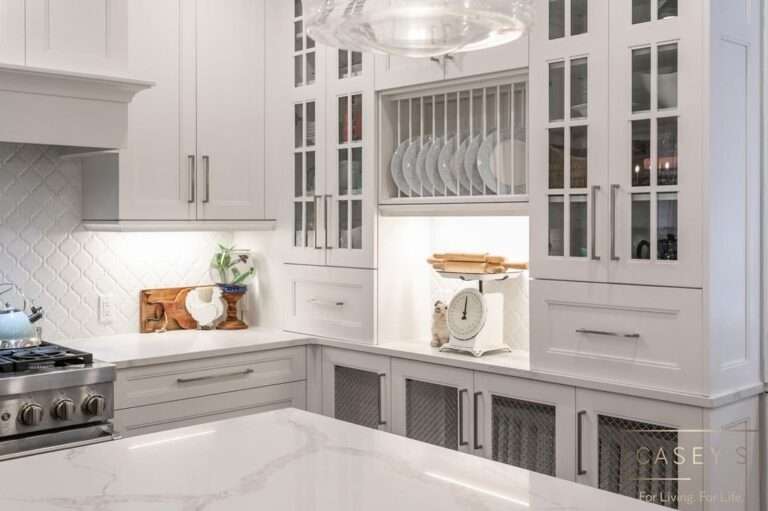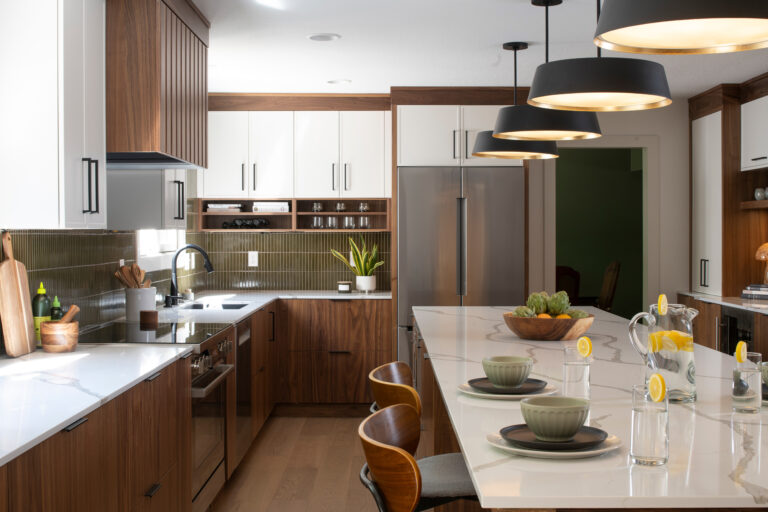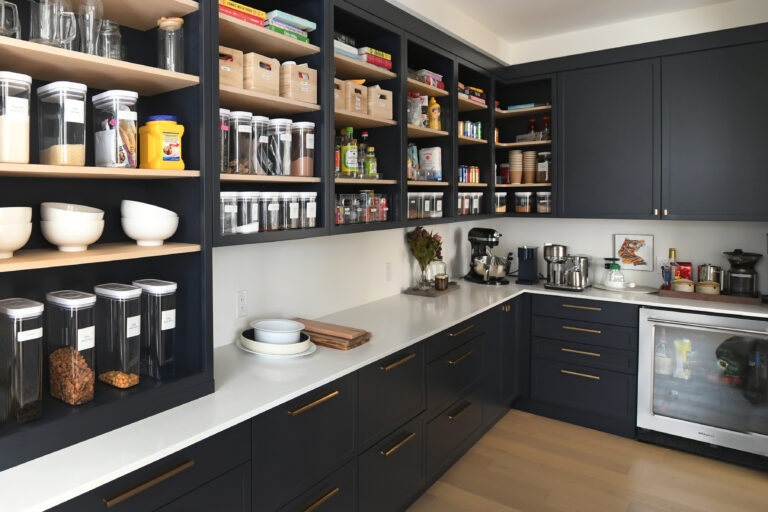Glass block accents are making a comeback. Once a staple of 80s, 90s, and early 2000s interiors, they were used in half-walls, bar fronts, and showers as a way to divide space while letting light through.
In recent years, they felt dated, a trend of the past. Today, designers are bringing them back with a cleaner, more intentional approach, especially in kitchens and bathrooms.
The History of Glass Block Accents in Kitchens and Bathrooms
Glass blocks first gained popularity because they combined the need for natural light and privacy. Their geometric patterns added visual texture while diffusing light, which made them appealing for busy spaces. Kitchens often used them in half-walls or breakfast bars, backsplashes, or even island accents. During this era, bathrooms embraced glass block accents for shower walls and windows.
Eventually, the trend faded and we moved into other eras of design. By the early 2000s, they were replaced by more minimal finishes.
We all know trends are often recycled and reimagined as new and improved versions of the past. This is what is happening with glass block accents. With the rise in popularity of mid-century modern style, and other 70s – 80s trends like wood veneers, house plants, and geometric patterns, glass blocks are once again finding their place.
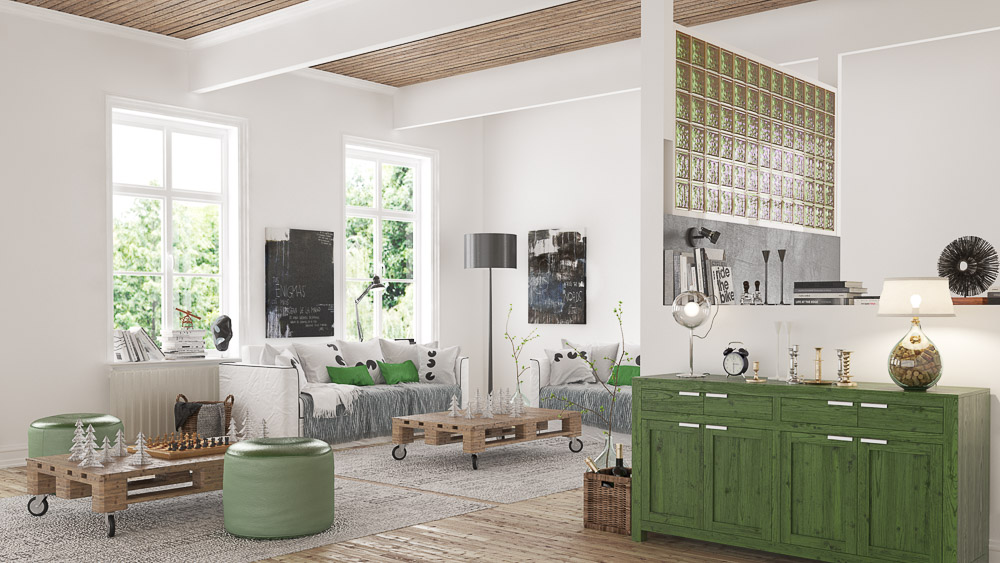
Why Glass Blocks Work Again
Today’s take on glass block design feels fresh. The material hasn’t changed much, but the way it’s used has.
Light without exposure: Perfect for bathrooms where you want daylight without sacrificing privacy
Texture next to cabinetry: Flat cabinet fronts and smooth counters benefit from the dimension of glass blocks
Smaller accents, bigger impact: Instead of entire walls, glass blocks are used in small areas for a pop of visual interest
Modern variations: Larger or elongated block sizes, tinted finishes, and minimal grout make them feel more current
As Southern Living notes, “once considered outdated, the trend is making a comeback thanks to designers who are rethinking where and how to use the material”.
How to Integrate Glass Blocks With Cabinetry
Cabinetry is often the anchor of a kitchen or bathroom, so glass blocks should feel like a complement, not an afterthought.
Pair with simple cabinet styles: Flat-panel or slim shaker cabinets allow the glass block to stand out without competing for attention, contemporary or mid-century styles work best for this trend
Consider finishes: Warm wood cabinetry can soften the cool look of glass, while glossy painted cabinets can emphasize its geometric shine
Frame specialty zones: Consider using glass blocks to highlight a beverage bar, coffee station, or vanity nook that is surrounded by cabinetry
Balance proportions: Keep cabinetry in solid runs, then use glass blocks in smaller doses so the space feels intentional rather than busy
- Clean lines: ensure banks of cabinetry and countertops align with grout lines and block dimensions for a clean, modern look
When used thoughtfully, glass blocks can act as a design accent that breaks up the visual weight of cabinetry and brings in light and texture.
Are Glass Block Accents Right for Your Home?
Glass blocks are not a neutral choice. They’re bold, and not every homeowner will love the look. Just like stained glass is beloved by those who prefer tradition, glass blocks are a similar statement for those who desire a bit of retro flair.
Start with a small feature. Pair it with cabinetry that has clean lines and simple finishes. They highlight the cabinetry and add an interesting feature to your home.



